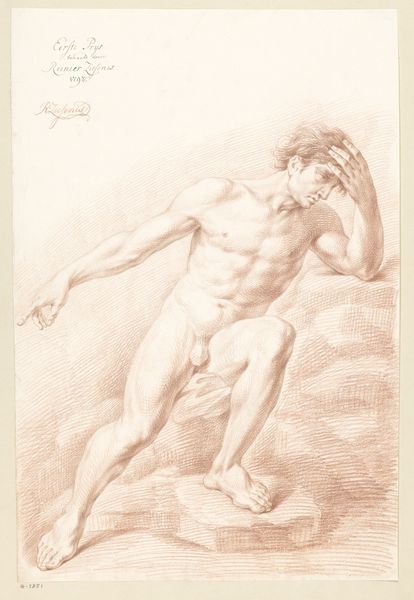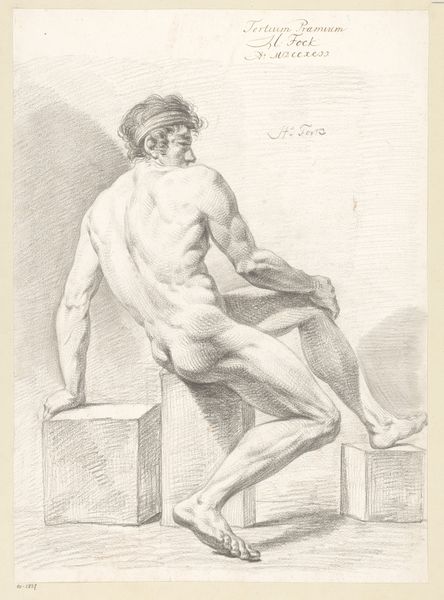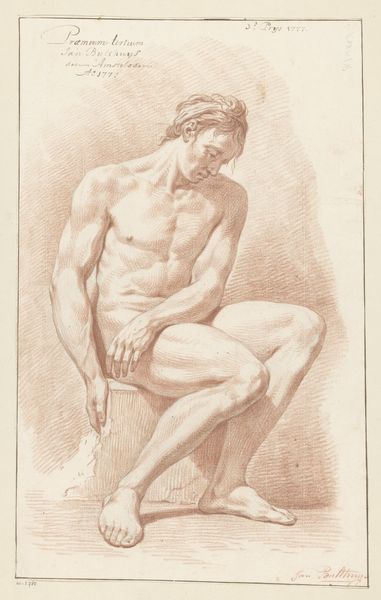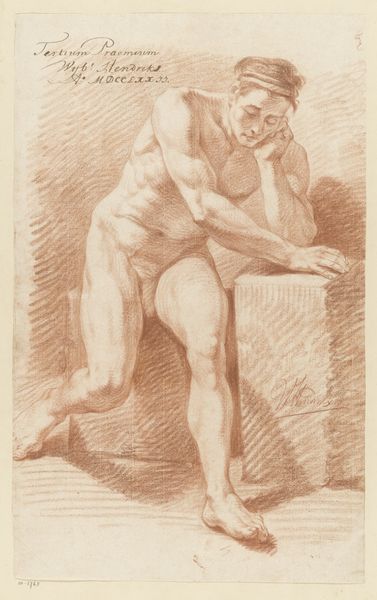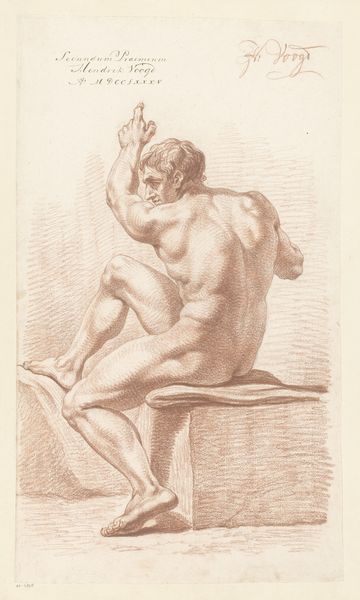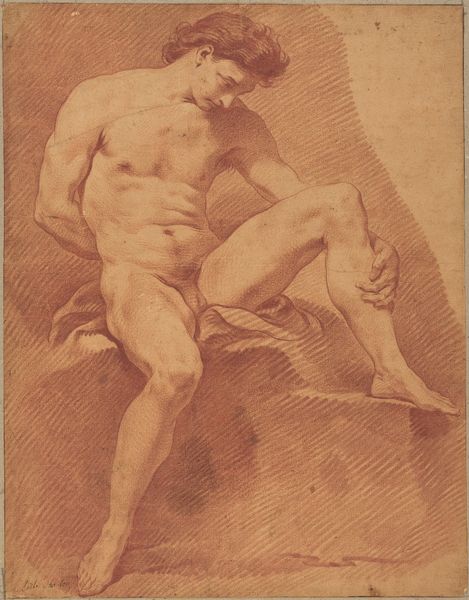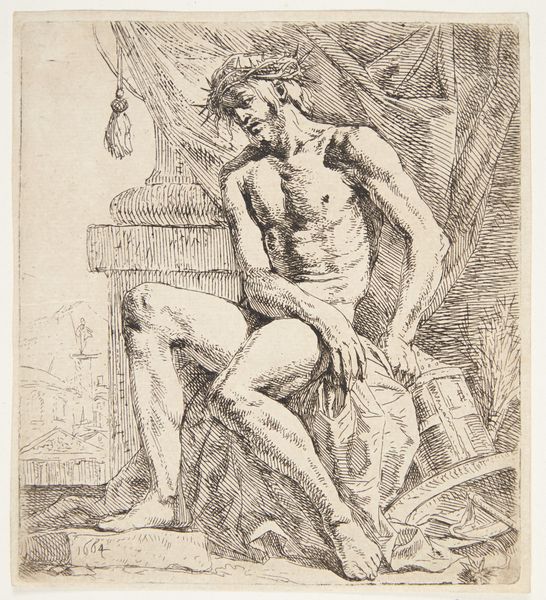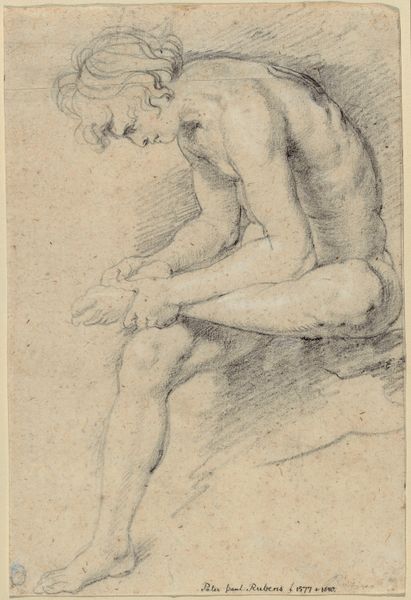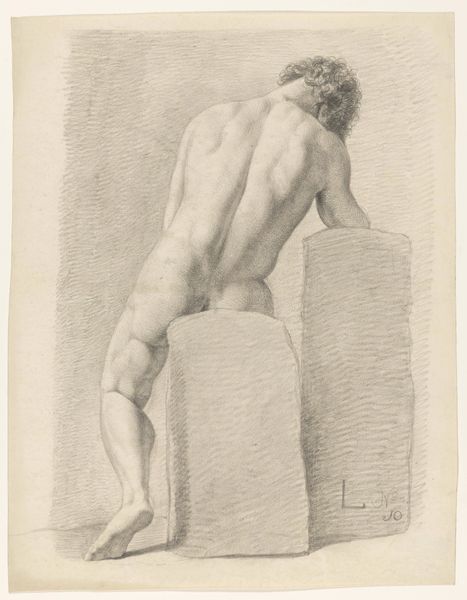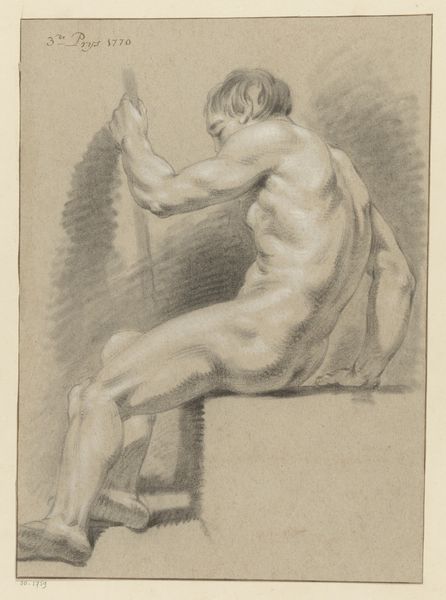
drawing, ink
#
portrait
#
drawing
#
baroque
#
charcoal drawing
#
figuration
#
ink
#
pencil drawing
#
nude
#
portrait art
Dimensions: height 474 mm, width 340 mm
Copyright: Rijks Museum: Open Domain
Curator: The figure's contemplative, almost pained, expression immediately draws the eye. There's an intensity to the pose and a raw vulnerability, wouldn’t you agree? Editor: Indeed. Allow me to introduce “Zittende naakte man met draperie,” a red chalk drawing from 1722 by Bernard Picart, currently housed at the Rijksmuseum. The meticulous detail and the cross-hatching technique lend it an almost sculptural quality, despite being rendered on paper. It exemplifies baroque figuration. Curator: I’m intrigued by the material reality implied by Picart’s choices. Red chalk allowed for mass production, making such academic studies available to a wider audience. What does this tell us about the labor practices involved and the accessibility of artistic training during that period? How did workshops function, and how were these drawings used within that economy of artistic production? Editor: Interesting angle, yet I’m inclined to concentrate on how form communicates meaning here. The figure is strategically draped. That stark contrast between exposed skin and fabric, those heavy, dramatic folds... semiotically speaking, drapery often signals both concealment and revelation, creating a visual tension. It guides our eyes to critical parts of the form. Curator: Right, and consider the actual production of drapery in the 18th century—the textile industry, the labor involved in its creation... isn’t that inherent to understanding the symbolic weight it carries within the artwork? That specific piece of fabric would be indicative of certain trades and economic realities, providing insight to class and industry. Editor: I see the utility of that context, yet, consider just the formal elements, devoid of labor details: observe how light interacts across the surface of the subject’s skin and across the draping, which offers a complex and aesthetically charged interplay. Note how the subject directs his gaze downward and the set of the mouth mirrors a solemnness that transcends its time. It's the power of classical art encapsulated through refined craftsmanship. Curator: Well, for me, considering both the craftsmanship *and* the social circumstances behind production enhances the drawing. These materials carry economic meaning. Editor: I see the power in both aspects after this conversation, and hopefully, our listeners have benefited, too. Curator: Yes, exactly. Perhaps they will investigate all artistic realities now!
Comments
No comments
Be the first to comment and join the conversation on the ultimate creative platform.

